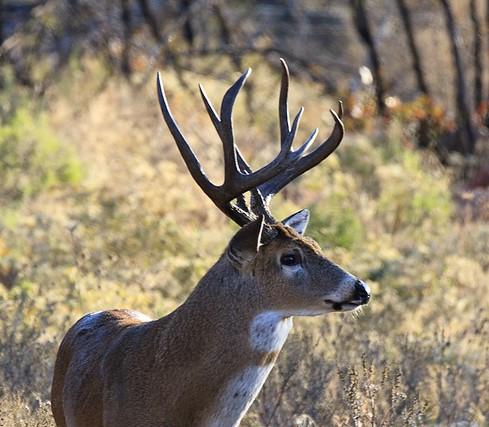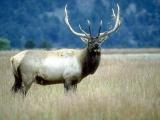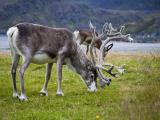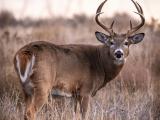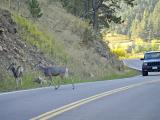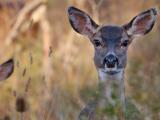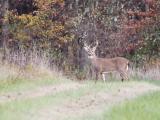Today in mBio a team of experts issued a new call to action, urging state and federal entities to immediately fund research and develop new diagnostic tests targeting chronic wasting disease, or CWD.
CWD is a prion disease that affects cervids—moose, deer, and elk—and has been found in animals in 26 states, Canada, Scandinavia, and South Korea. The animals, once infected with the misfolded protein, or prion, are highly infectious, and can excrete the prions into their environments. Infection results in neurologic degeneration and ultimately death.
So far, there is no evidence that CWD, which has expanded its US range in wild cervids, can cross species and infect humans, the way bovine spongiform encephalopathy (BSE), or "mad cow disease," another prion disease, did in the 1980s and 1990s. But for many prion researchers, even a small risk of interspecies spread is too much.
Michael T. Osterholm, PhD, MPH, director of the University of Minnesota's Center for Infectious Disease Research and Policy (CIDRAP), said the paper is the first attempt at a cohesive framework for understanding CWD in America.
"In the ideal world, this prion will never escape out of the cervid population," Osterholm, the lead author, said. "We don't want to reduce hunting because it's an important part of animal management, but we want access to safe venison."
CIDRAP, publisher of CIDRAP News, in March launched a Chronic Wasting Disease program to address the threat.
Need for more sensitive, rapid tests
"Relying on the current tests is too late," said Mark Zabel, PhD, the associate director of Colorado State University's Prion Research Center and one of the authors of the paper. "The animals are likely to be shedding the disease by the time they die in the wild."
Zabel said funding should go toward the development of new field tests, which would help hunters test animals for the disease quickly and while the animal is still alive. Currently, the US Centers for Disease Control and Prevention (CDC) recommends all hunters in endemic areas test animal carcasses for CWD and refrain from eating any meat that tests positive.
According to Cory Anderson, MPH, a graduate research assistant at CIDRAP, hunters need to wait anywhere from a week to months before they receive test results.
But by that time, Zabel said, the dead animal's carcass could further spread the prions into the soil and environment.
Zabel explained that when hunters kill a deer or an elk, they often leave the gut pile intact in the forest or field. "They largely leave the most infectious tissues in the pile, and there is currently no way to clean those up or remediate the environment," he said. "There's nothing we are doing."
The ability of prions to seep into the environment contributes to CWD's spread and potential threat to human health. Most prion diseases, like BSE and scrapie, which infects sheep, occur in domesticated animals, and see high concentration of infected prions in the animal's organs.
CWD, in contrast, infects free-ranging species, and it affects the animal's organs and immune system, allowing a sick animal to excrete the disease via feces, saliva, urine, and blood.
Rapid spread is cause for worry
CWD was first identified in the United States in 1967, and in 2000, only five states had documented cases. The past 20 years, however, have seen a rapid spread of the disease from Western states, with new regions testing positive each year.
The paper quotes the Alliance for Public Wildlife, which estimates that 7,000 to 15,000 CWD-infected animals are consumed annually, a number that may increase by 20% each year.
In addition to emphasizing the need for more funding for research and diagnostic development, the authors urge enforcement of mandatory CWD testing in all dead or harvested cervids in endemic areas, and heightened surveillance of human prion diseases to detect any possible transmission.
The mandated testing may be the first practical hurdle. Wisconsin, which has some of the highest CWD rates in the country, offers free testing to hunters but does not mandate it. In 2018, only 5% of Wisconsin's 336,464 harvested deer were tested.
Anderson said it's not only hunters in Wisconsin at risk for eating CWD-positive animals.
In some parts of some counties in Wisconsin, the prevalence of CWD among adult male deer is over 50%, Anderson said. "Even though every state around Wisconsin doesn't allow the importation of certain parts of harvested cervid carcasses, there's almost certainly people driving CWD-infected carcasses back to their home states, which could spread the disease to new areas."
Some prion researchers, however, have a more conservative approach but still exercise caution. Krysten Schuler, PhD, is the co-director of the Cornell Wildlife Health Lab in Ithaca, New York. She said no deer in her region of New York has tested positive for CWD since 2005, and though she sees the potential risk of interspecies infection, it may not happen.
"CWD could be like scrapie, a prion disease that kills sheep, but has never made the jump to humans," Schuler said. But Schuler herself said she follows CDC recommendations and tests her venison before eating it.
"I've never had a sample test positive for CWD," she said. "But I want to be on the safe side."
See also:
Jul 23 mBio paper
Jul 23 University of Minnesota news release
Mar 19 CIDRAP News scan on CIDRAP CWD program
